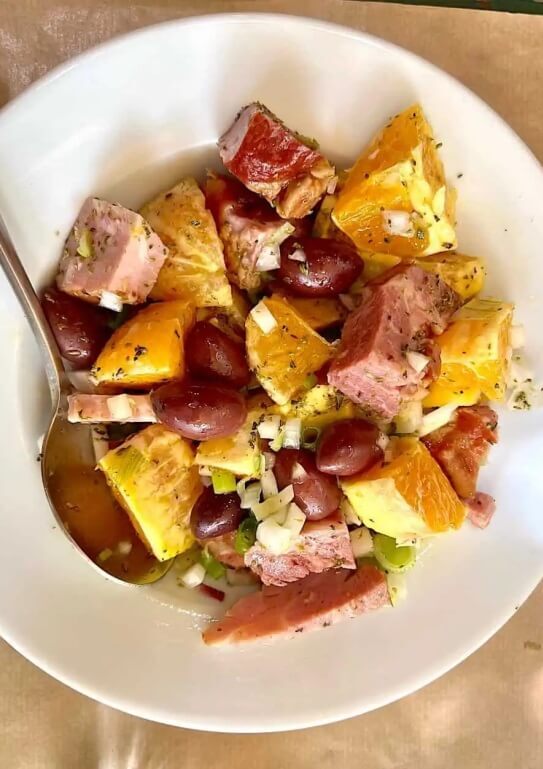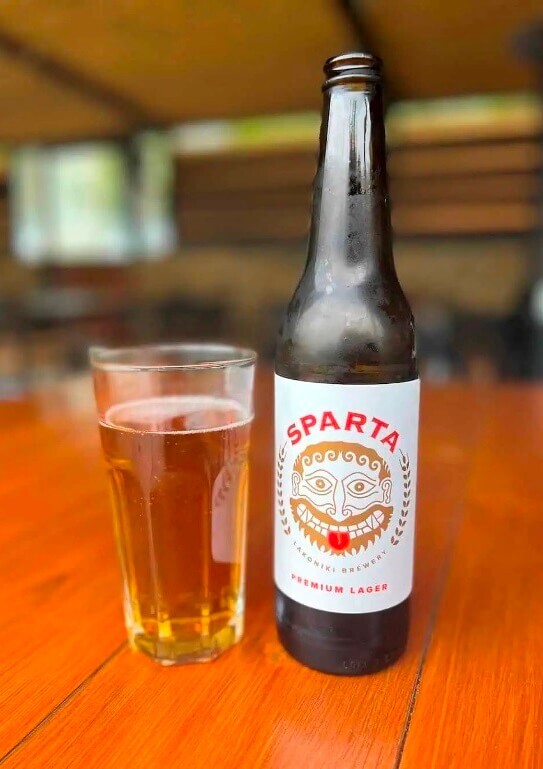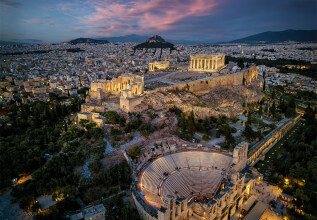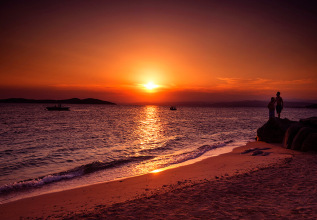17 MIN
TRAVEL TIPS
13 Top Reasons to Add Sparta to Your Greece Bucket List

With the ruins of its ancient Acropolis, proximity to the UNESCO World Heritage site of Mystras, delicious regional cuisine and beautiful scenery dominated by the forested Taygetos mountains, Sparta is one of the most overlooked and appealing destinations in Greece.
It’s Worth Exploring Greece Beyond the Obvious
When it comes to travel in Greece, popular places like Athens and the Greek islands tend to rise to the top of people’s itineraries. While I’d never recommend skipping such cultural centres and beautiful hot spots, other, less obvious, places can be equally rewarding. Especially if you may not have considered them in the first place!
Visiting Sparta was a surprise for us. It exceeded our expectations in many ways. We arrived in Sparta midway through a 7-week journey through Greece. The city was part of a post-TBEX Kalamata FAM tour hosted by JayWay Travel, a boutique tour operator specializing in custom tours in Europe. Founded in 2006, JayWay works with travellers to craft bespoke itineraries and then takes care of planning and logistics. Our 3-day tour was designed to give us a taste of the activities, excursions and experiences they can set up. It’s safe to say that we would have missed much of this special region of Greece had we been left to our own devices. Sparta takes up only a paragraph in many guidebooks to Greece. It deserves so much more!
Why Visit Sparta, Greece
Venture to this city in the heart of the Peloponnese and you’ll be rewarded with views of towering mountains, fields of wildflowers, seas of shimmering olive trees and the stone ruins of a civilization descended from ancient gods. You’ll dine on unique regional cuisine beneath the stars and sip wine from vineyards cultivated in centuries past. It’s an incredible destination that should be experienced at least once in a lifetime! We can’t wait to return!

Maniatiki salad with oranges from Laconia | © Michele Peterson
This travel guide to Sparta (Sparti), Greece will help you see all the attractions, soak up its rich culture and experience the best this historic destination has to offer. We’ve also included some insider tips on local food and drink you don’t want to miss.
Location of Sparta
Sparta is located in the region of Laconia within the southwestern area of the Peloponnese. It refers to both the modern city of Sparti and the archeological site of ancient Sparta. Sparti (and ancient ruins of Sparta) are 220 kilometres (132 miles) west of Athens, around a 2.5 hour drive. Be sure to factor in a few days in Athens.
We stayed at and recommend the InterContinental Athenaeum Athens. It’s also easy to combine Sparta with a trip to Kalamata, the capital of the Peloponnese or Monemvasia (the picturesque castle town) or Areopoli, as they’re each a 1-1.5 hours drive away. We rented a car in Athens and drove to Kalamata.
Spartans in History and Modern Culture
Early Greek mythology shows the Spartans as descendants of Heracles. The first king of Laconia was even said to have been the son of Zeus by the mountain nymph Taygete. This pedigree of strength was built on through a social system that emphasized military proficiency, obedience and loyalty. By the 5th century BC, Sparta was the dominant military power over its main rival Athens.
The effectiveness of Sparta’s elite professional soldiers combined with their valor in battle led to Spartans being held in high esteem by Greeks and other non-Spartans. This admiration increased exponentially after the Battle of Thermopylae which took place in 480 BCE. In the battle, 300 Spartans held off up to one million invading Persian forces for three days, choosing to die–under a volley of spears and arrows–rather than surrender. ‘Come and take them’ is said to have been King Leonidas’s response to the enemy when they demanded his army lay down their weapons. The fascination with Spartan military courage and society has endured to modern times, influencing political belief systems and popular culture. For example, the movie ‘300’ (and the earlier Marvel comic series) is a retelling of the Battle of Thermopylae starring actor Gerard Butler in the title role of King Leonidas.
Top Things to Do in Sparta
- Marvel at Acropolis Hill in Ancient Sparta
But during our guided tour, I learned that the role of arts, culture, music and theatre in ancient Sparta may have been understated. Spartan society was much more than a brutal militaristic state. It was comprised of more than the fearless warrior class. Women enjoyed more rights and autonomy than any other Greek city state in the Classical Period. Even the belief that Spartans practiced eugenics by infanticide may have been a myth. No mass graves with skeletons of children with deformities have ever been found. Exploring this site is made all the more memorable since its free of the crowds you’ll see at many other archeological sites in Greece.
- Pay Homage to the Statue of Leonidas the Lacedaemonian
- Marvel at Antiquities in the Archeological Museum of Sparta
Pro Tip: The most notable statue within the museum is the bust of Leonidas. It’s located in the far exhibit hall.
- Gaze at Ancient Mosaics within the House of Mosaics
Fun Fact: A representation of the “Rapture of Europa” is also represented on the 2 EUR coin.
- Create your Own Mosaic at an Artisan Workshop
- Visit (free) and sit beneath the shade of the orange tree and watch Dimitra create works of art using pebbles, stones, stained glass, mirror and more.
- Shop for unique handcrafted jewellery and decor items.
- Book a 2-hour introductory mosaics session. Cost is 15 EUR (price subject to change).
- Book a 3-hour hands-on workshop and make your own stone mosaic. Cost is 70 EUR (price subject to change).
- Learn About Olive Oil at the Museum of Olive and Greek Olive Oil
Make It: Kalamata olives are delicious as table olives but you can also cook with these Greek treasures. Make a delicious olive tapenade or a Greek village salad using kalamata olives.
- Dine on Delicious Laconian Cuisine
- Bouzopoula: Slow-roasted suckling pig.
- Bardouniotikos: Rooster baked in a clay pot with tomatoes and onions with melted cheese.
- Cheeses: Mizithra, sfella (dubbed ‘fire cheese’ due to its strong flavour), graviera and feta are the most popular.
- Kayanas: Scrambled eggs with tomato, cheese and syglino (smoked pork from the Mani Peninsula).
- Mountain Tea: Also known as Tea of Taygetos, this restorative brew is made of wild botanicals such as sage harvested from the Taygetos Mountains.
- Peloponessian Salad: Greens, Laconian oranges, pine nuts, shaved cheese and balsamic vinegar.
- Ktima: An appetizer salad of chopped tomato, Kithera (olive oil bread rusks made on the island of Kythera in the southern Peloponnese) and feta cheese.
- Taygetos Olives: Table olives of kalamata olives with dried thyme.
- Orange Pie: Cake made with Laconian oranges and phyllo rather than flour.
- Sample Fine Regional Beer and Wine

Bottle of Sparta beer in Sparti, Greece. | © Michele Peterson
No trip to Laconia (or any region of Greece!) would be complete without sampling the local wines, beer and spirits. You’ll appreciate the refreshing taste of the local beer after full days in the sun exploring the archeological sites of Sparta and Mystras. A must-try is the local Sparta beer, a 5% ABV lager brewed by Lakoniki Brewery, from spring water sourced from the Taygetos Mountains. Also worth seeking out is Nymph beer, a lager made of five different hops, from Thessaloniki. Viticulture in the region dates back to antiquity. So be sure to sample the fine-quality Peloponnesian white, red, rosé and dessert wines. Many, such as Monemvasia-Malvasia have PDO and PGI designations. Interesting regional varietals such as moschofilero (rosé), thrapsa (red from Laconia), kydonitsa and mavroudi (whites from Laconia) pair perfectly with a plate of mezes (Greek appetizers).
- Sip Potent Regional Spirits at a Local Taverna
- Enjoy a Tutoured Olive Oil Tasting
During our tour we visited the Liotrivi Organic Estate near Monemvasia, a 70 minute drive from Sparta. After a tour of their verdant olive grove and onsite museum, we enjoyed a tasting of Athenoelia, Koroneiki, Myrtolia, Kalamata, a blend of Laconian varietals and even an olive oil harvested from wild olive trees. Once you’ve learned about the health benefits of Greek EVOO and tasted it, you won’t want to go back to your supermarket brand made of mystery olives at home. The good news is you can shop online for Liotrivi olive oil and get it shipped to your doorstep.
Pro Tip: At the Liotrivi Organic Farm you can ‘adopt an olive tree’ and receive 5 litres of high quality, organic, cold-pressed extra virgin olive oil from your own tree annually.
- Explore the Mystic Archeological Site of Mystras
- Visit the Tomb of Leonidas
- Soak Up Some Wellness at a Destination Hotel
Final Thoughts on Things to Do in Sparta
In summary, visiting Sparta offers a memorable experience for travellers looking for a glimpse into the ancient history of Greece. Mostly free of crowds, it’s especially scenic with the impressive Taygetos mountain range serving as a striking backdrop to fields of olive groves, orange trees and vineyards. And, as we discovered, Sparta also makes a handy gateway to other attractions in the Peloponnese such as the Mani Peninsula and beyond.
Getting Around the Peloponnese
Although there is a bus from Athens to Sparta, it’s better to rent a car or arrange a transfer with a car and driver so you can explore beyond the city of Sparta itself. During our tour, we appreciated our skilled driver (aptly named Leonidas) so we could focus on enjoying the scenery. And a wine-tasting or two! However, for much of our time in Greece, we did rent a car. Once you’re off the main toll highways, the roads in the Peloponnese are mountainous and narrow. The views are incredible and it’s fun to stop in the mountain villages on market days. We found the best car rental rates on Discovercars.com, an online reservation system that compares rates from different companies.
Best Hotels in Sparti Greece
Mid-range: For a centrally-located hotel in Sparti, try the Menelaion Hotel. Built in 1935, this Neoclassical building has been renovated and features spacious rooms (some with balconies), AC, and a swimming pool.
Luxury: The Mystras Grand Palace Hotel & Spa is the best luxury hotel near Sparti. It features 2-storey stone villas with access to seasonal outdoor swimming pools set amid beautifully landscaped gardens. It’s an 8 minute drive from Mystras Grand Palace Hotel & Spa to the Archeology Museum (and other major attractions in town)


